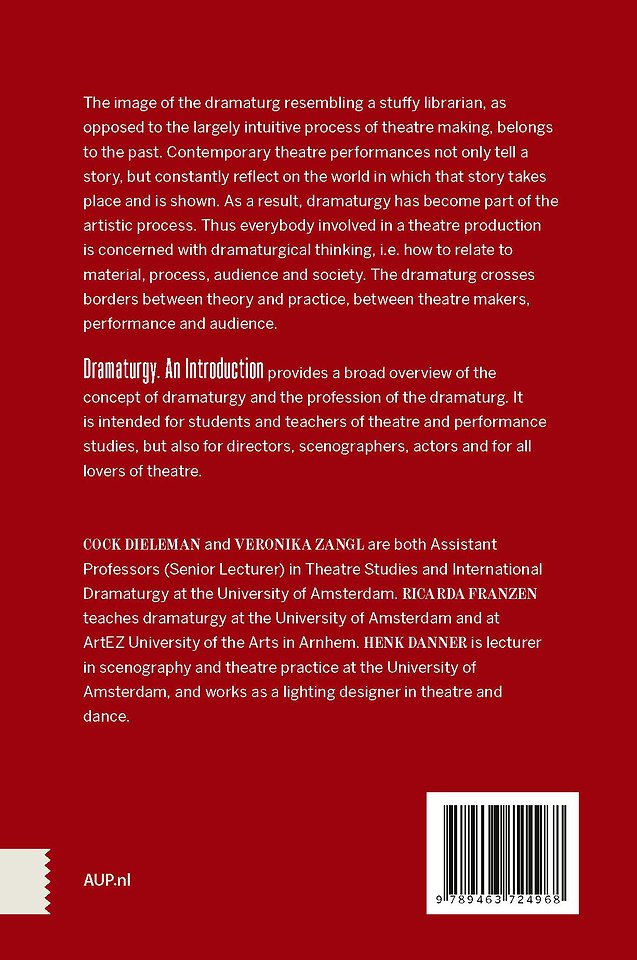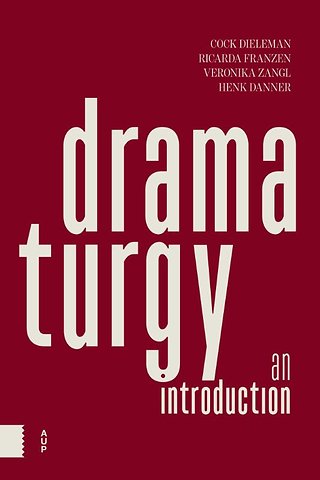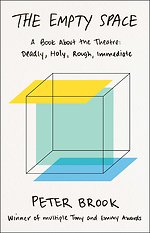Dramaturgy
An Introduction
Paperback EN 2021 1e druk 9789463724968Samenvatting
The image of the dramaturg resembling a stuffy librarian, as opposed to the largely intuitive process of theatre making, belongs to the past. Contemporary theatre performances not only tell a story, but constantly reflect on the world in which that story takes place and is shown. As a result, dramaturgy has become part of the artistic process. Thus everybody involved in a theatre production is concerned with dramaturgical thinking, i.e. how to relate to material, process, audience and society. The dramaturg crosses borders between theory and practice, between theatre makers, performance and audience.
'Dramaturgy. An Introduction' provides a broad overview of the concept of dramaturgy and the profession of the dramaturg. It is intended for students and teachers of theatre and performance studies, but also for directors, scenographers, actors and for all lovers of theatre.
Specificaties
Lezersrecensies
Inhoudsopgave
1. What is dramaturgy? <br/>
1.1 Dramaturgy with and without a dramaturg <br/>
1.2 The roots of today’s dramaturgy: From Poetics to postdramatic theatre <br/>
1.3 Theatre as a process of transformation <br/>
1.4 Dramaturgy in the Netherlands and Flanders <br/>
1.5 Perspectives on dramaturgy <br/>
1.6 Dramaturgy and theatre research <br/>
1.7 Dramaturgy within and across disciplines, styles, and genres <br/><br/>
2. Material <br/>
2.1 Text as material <br/>
2.2 Aristotle: Language as medium of imitation (mimesis) <br/>
2.3 Theatre landscape until the eighteenth century <br/>
2.4 Absolute drama <br/>
2.5 Concepts of drama analysis <br/>
Primary text / Secondary text <br/>
Story & plot <br/>
Dramatic characters <br/>
Monologue <br/>
Re-definitions of processes of meaning production <br/>
2.6 Brecht: Epic theatre <br/>
2.7 Metatheatricality <br/>
2.8 Theatre of the Absurd <br/>
2.9 Textual montage techniques <br/>
Accumulation as a principle of montage <br/>
Juxtaposition as a principle of montage <br/>
Dissipation as a principle of montage <br/>
2.10 Material and materiality <br/>
2.11 Theatre as a means of exploration <br/><br/>
3. Process: From material to performance <br/>
3.1 The material and the envisioned performance <br/>
3.2 Translational processes in theatre <br/>
Context – location <br/>
Context – time <br/>
Translation for accessibility <br/>
Starting point: The source <br/>
Relevance and inspiration <br/>
Research and interpretation <br/>
3.3 Visual aspects of dramaturgy <br/>
Scenography <br/>
The space and the audience <br/>
Writing the space <br/>
Light <br/>
The visual experience <br/>
3.4 Auditory aspects of dramaturgy <br/>
Voice <br/>
A few historical examples of voice in theatre <br/>
Beyond meaning <br/>
Accents, dialect, play with language, and sound of voice <br/><br/>
4. Audience <br/>
4.1 The first spectator <br/>
4.2 The position and the role of the audience in the performance: the spectator as/is dramaturg <br/>
The dramaturg as intermediary between performance and audience <br/>
4.3 Audience reach <br/>
4.4 Theatre and politics: The heritage of Brecht and Boal <br/>
4.5 The auditorium and the stage <br/>
Site-specific and immersive theatre <br/>
4.6 Youth in/and theatre <br/>
Dutch Theatre for Young Audiences <br/>
Theatre education for children and youngsters <br/>
The last spectator <br/><br/>
Epilogue <br/>
Glossary <br/>
Notes <br/>
Illustration acknowledgements <br/>
Bibliography <br/>
Index <br/>
Vaak samen gekocht
Anderen die dit kochten, kochten ook
Rubrieken
- advisering
- algemeen management
- coaching en trainen
- communicatie en media
- economie
- financieel management
- inkoop en logistiek
- internet en social media
- it-management / ict
- juridisch
- leiderschap
- marketing
- mens en maatschappij
- non-profit
- ondernemen
- organisatiekunde
- personal finance
- personeelsmanagement
- persoonlijke effectiviteit
- projectmanagement
- psychologie
- reclame en verkoop
- strategisch management
- verandermanagement
- werk en loopbaan









